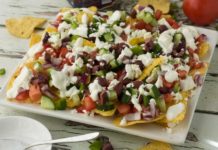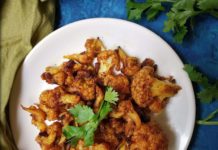From sidekick to superstar: the rise of the salad
Rebecca Nicholson
With chefs making it their star, and veganism on the rise, salad is no longer the sad side it used to be. Have the stereotypes had their day?
In 2011, feminist site The Hairpin published a story called Women Laughing Alone With Salad. Founder and editor Edith Zimmerman had collected a wide range of stock agency photographs that came together as one surreal whole. Women grinned as they waved a cherry tomato near their mouths, as they tossed leaves, as they stuck a fork into a big plate of kale and thought about something amusing. It struck a nerve and went viral. It was silly but also pointed – one big exasperated eye-roll at the idea that women are happy to deny themselves fat and flavour. It said that women love salad so much that they are filled with joy, bordering on ecstasy, when they consider consuming even the tiniest leaf of cress. In that meme, salad became a shorthand for a particularly gendered sort of self-control or deprivation. There’s even a novel called Sad Desk Salad, about a clickbait blogger for a women’s website, written by a former Jezebel staffer.
The cliched image of salad as it once was – soggy leaves, a husk of dry cucumber and a whisper of tomato – is a rare fixture of pop culture. It hardly ever appears on TV and in films, because it is seen as bland and generic. Writers use food to tell you about their characters – particularly if they are men. Think of Tony in The Sopranos, constantly feeding his stress with ziti. Think of Dev in Master of None, linking his pursuit of pasta to his pursuit of love. In Friends, Joey’s devotion to a sandwich is a punchline in at least three quarters of all episodes. Even the faddy ladies of Sex and the City aren’t famous for eating salad: they brought us cupcakes, cosmopolitans and endless boozy brunches. If a writer makes a character’s favourite food salad, then they are admitting that this character is as limp as an iceberg lettuce that has been left on the shop shelf for too long.
There are exceptions. On Keeping Up with the Kardashians, the family munches their way through limitless mounds of takeaway salad; Buzzfeed collected them into the self-explanatory post, “Literally Just 29 Pictures of Kardashians Eating Salad”. Fargo and Mad Men have used salads fixed in jelly to establish historical settings. The Gilmore Girls upended the salad stereotype in an early episode from 2001, when Rory’s love interest, Dean, brings pizza to Lorelai’s house, along with a salad for himself. Rory and Lorelai look puzzled. “It’s for me,” he explains. “Clearly,” Rory quips back. Salad is more alienating for the Gilmores than Dean’s conservative views about who is supposed to cook for the household (clue: it’s not him). It’s funny, but oddly dated because, somewhere along the line, salad stopped being the butt of the joke.
It still happens all the time, of course, but to gender food in this way – man prefers salad to pizza, hilarity ensues – seems increasingly anachronistic. That’s why the “female-friendly” steak restaurant that offered smaller lady portions was widely ridiculed when it launched in London in 2013 (although it remains open), and it’s why cookbooks that tell you how to eat like a man, which usually have a slab of meat on the cover and are called things such as “Dude Food”, seem so silly. (My favourite is the brilliantly ludicrous Men Love Pies, Girls Like Hummus by Sunday Brunch’s in-house chef Simon Rimmer.)
Besides, salads as the default healthy-living food have been elbowed out of the way by new trends and fads. A fear of the gluten bogeyman removed sandwiches from lunchboxes and replaced them with pulses, grains and veg. The relatively recent cults of clean eating and juice cleanses – with their imaginary detox powers – have replaced it as the go-to diet food; a cynic might suggest that is because there’s no money to be made in telling people to eat salad when they have heard it countless times before.
To make salad a punchline is to cling to a 1970s dinnerparty version of it. You only need to glance at any number of vegan recipe blogs or Facebook groups to see a rainbow riot of fruit and veg, and if you would prefer some meat or cheese with that, then the options are limitless. TV cooks such as Jamie Oliver and Nigella Lawson allowed balsamic vinegar to creep into our cupboards, and suddenly salads were more chic and European than the triptych of fridge leftovers they had once been. Countless chefs have made the salad the star, and it’s no longer a given that it be prefixed with “side”. The idea of that sad salad once memorialised in stock photos is slowly going off, and the laughing woman delighted to be eating it has gone the same way.
Source: theguardian.com










